UF alum tackles cancer in the heart of the Gator Nation
Travis Rockey, 67, and Gail, his wife of 43 years, spend their days in retirement serving others. "We believe that service to others is a critical part of…
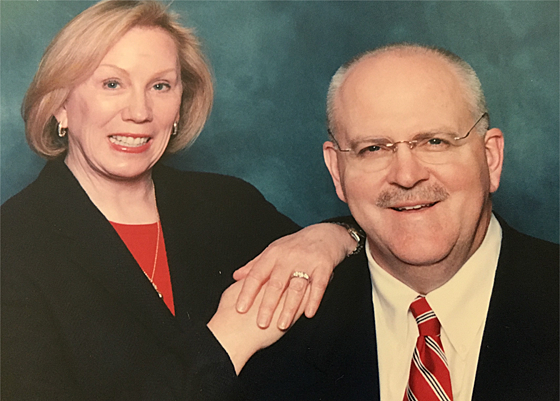
Update your location to show providers, locations, and services closest to you.
Lymph nodes are present throughout your body. They are an important part of your immune system. Lymph nodes help your body recognize and fight germs, infections, and other foreign substances.
The term "swollen glands" refers to enlargement of one or more lymph nodes. The medical name for swollen lymph nodes is lymphadenopathy.
In a child, a node is considered enlarged if it is more than 1 centimeter (0.4 inch) wide.
Swollen glands; Glands - swollen; Lymph nodes - swollen; Lymphadenopathy
Common areas where the lymph nodes can be felt (with the fingers) include:
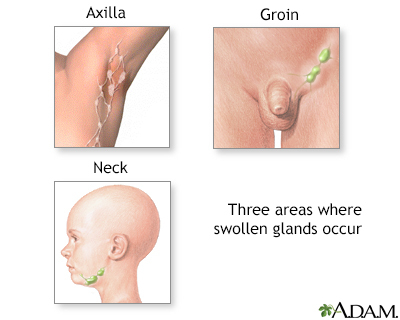
Infections are the most common cause of swollen lymph nodes. Infections that can cause them include:
Immune or autoimmune disorders that can cause swollen lymph nodes are:
Cancers that can cause swollen lymph nodes include:
Many other cancers may also cause this problem.
Certain medicines can cause swollen lymph nodes, including:
Which lymph nodes are swollen depends on the cause and the body parts involved. Swollen lymph nodes that appear suddenly and are painful are usually due to injury or infection. Slow, painless swelling may be due to cancer or a tumor.
Painful lymph nodes are generally a sign that your body is fighting an infection. The soreness usually goes away in a couple of days without treatment. The lymph node may not return to its normal size for several weeks.
Contact your health care provider if:
Your provider will perform a physical examination and ask about your medical history and symptoms. Examples of questions that may be asked include:
The following tests may be done:
Treatment depends on the cause of the swollen nodes.
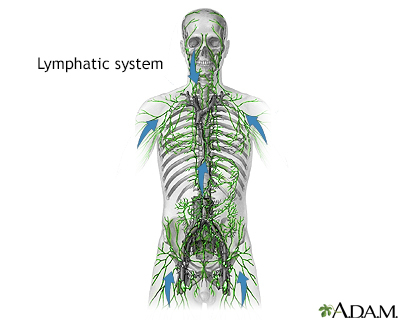
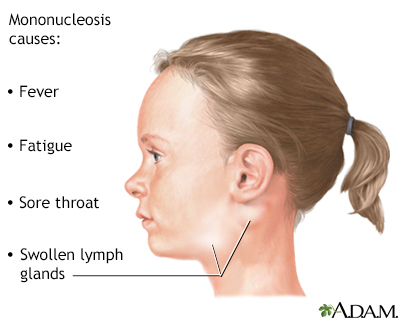
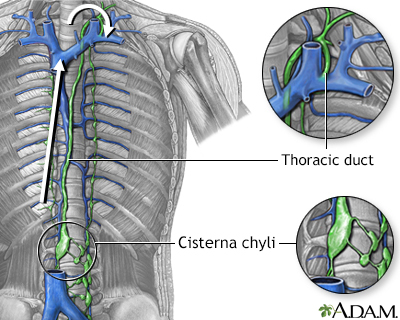
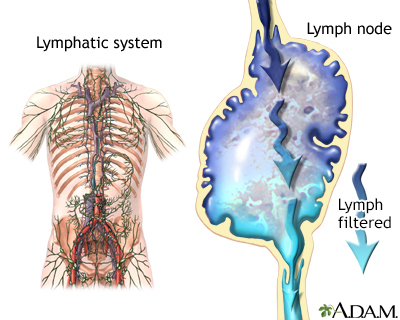

Tower RL, Camitta BM. Lymphadenopathy. In: Kliegman RM, St. Geme JW, Blum NJ, Shah SS, Tasker RC, Wilson KM, eds. Nelson Textbook of Pediatrics. 21st ed. Philadelphia, PA: Elsevier; 2020:chap 517.
Winter JN. Approach to the patient with lymphadenopathy and splenomegaly. In: Goldman L, Schafer AI, eds. Goldman-Cecil Medicine. 26th ed. Philadelphia, PA: Elsevier; 2020:chap 159.

Travis Rockey, 67, and Gail, his wife of 43 years, spend their days in retirement serving others. "We believe that service to others is a critical part of…
